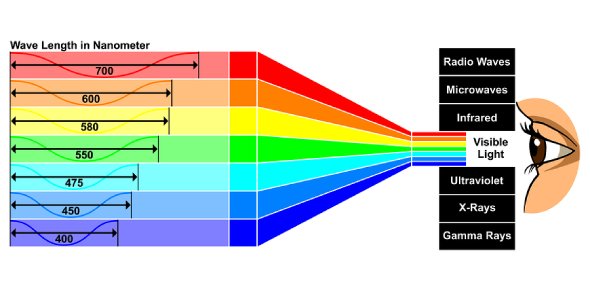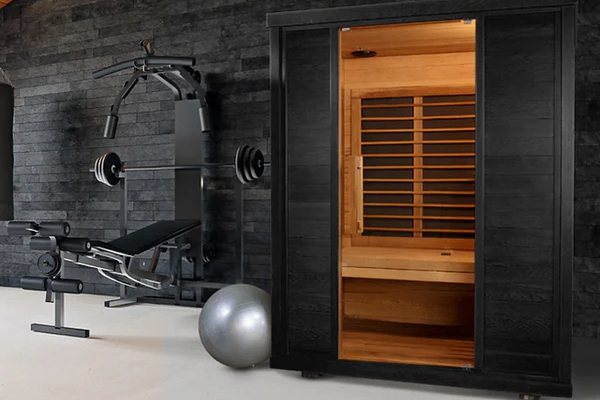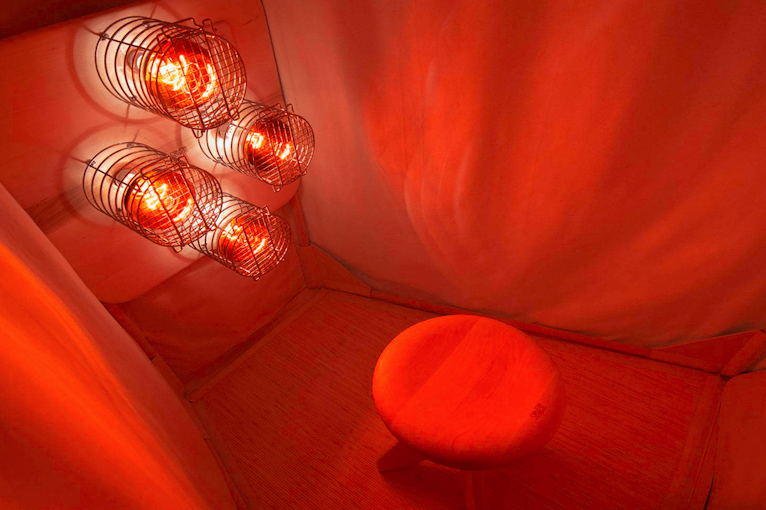- HOME
- Infrared Sauna Insights
- Infrared Radiation
Infrared Sauna Radiation: Here's What You Need To Know

What is infrared sauna radiation? And how safe is your home infrared sauna, sauna blanket or PEMF infrared mat? How does this work and produce all the infrared benefits?
To answer these questions, we need to understand what infrared radiation is, in terms of wavelengths and effects on the body. In the end, it's personal and largely hinges on your likes and wellness goals.
Imagine a type of light that you can't see but can feel, as a deeply comforting warmth. That's infrared radiation [1], a hidden star of the wellness world, and the heart of the infrared (sauna) therapy. The infrared sauna has become a hot wellness topic, for their cozy warmth as well as the health perks.
We'll take a closer look at the three main actors on the infrared stage: near, mid, and far infrared, and how they benefit us from head to toe.
A quick tour of the blog post
- Understanding infrared radiation: A spot on the electromagnetic spectrum
- Breaking down infrared radiation
- Near Infrared Radiation (NIR)
- Midwave Infrared Radiation (MIR)
- Far Infrared Radiation (FIR/FAR)
- Choosing the right infrared therapy for you
- Full spectrum saunas: Combination of wavelengths
- Conclusion
- A brief table of pros and cons

Understanding Infrared Radiation: A Spot on the Electromagnetic Spectrum
Infrared radiation is a form of energy that travels in waves. It's part of the electromagnetic spectrum, a family that includes radio waves, microwaves, visible light, and more. When these waves hit objects, they cause molecules to vibrate, creating heat.
Infrared sauna therapy harness these waves to warm our bodies directly, which can feel more comfortable than traditional saunas that heat the air around us.
Think of the electromagnetic spectrum as a giant piano keyboard, with each type of radiation a different set of keys. This spectrum has all sorts of radiation, lined up by their wavelengths and how fast they wiggle—called frequency.
From the high-pitched gamma rays to the low rumbles of radio waves, each type plays its tune.

On the higher end, you'll find gamma rays, X-rays, and ultraviolet (UV) radiation. They're like the high notes that can be pretty intense and even harmful, causing things like sunburns. Then, the notes get lower and mellower with visible light and infrared radiation, which are much nicer to us.
Infrared radiation, or IR for short, is like the warm, cozy middle keys. It stretches from around 700 nanometers (nm), just past where our eyes can see, to 1 millimeter (mm), right before we get to the radio wave territory. And it moves at frequencies from about 300 gigahertz (GHz) to 400 terahertz (THz), sitting snugly between the high-frequency visible light and the slower microwaves.
Now, these aren't hard lines. As NASA [2] tells us, the borders between types of radiation are fuzzy. Where visible light turns into infrared or infrared turns into microwaves isn't a sharp line but more of a gradual blend.

Breaking Down Infrared Radiation
Infrared radiation nestles just beneath the red end of the visible spectrum. Its name, 'below red,' hints at its position. Experts divide it into three bandwidths [3]. Each has its unique wavelength range. Yet, an online search shows a lack of standardization. The definitions of these bands vary widely:
Near Infrared Radiation (NIR or IR-a)
Occupying the space just beyond the visible spectrum, NIR waves range from 700 nanometers (nm) to 1,300 nm (0.7 microns to 1.3 microns). These are the sprinters of the infrared world, boasting the shortest wavelengths and highest frequencies, approximately 215 terahertz (THz) to 400 THz. This translates to more energy but less heat output compared to its infrared siblings.
Midwave Infrared Radiation (MIR or IR-B)
With wavelengths stretching from 1,300 nm to 3,000 nm (1.3 microns to 3 microns) , MIR sits comfortably in the middle of the infrared spectrum with frequencies ranging from 20 THz to 215 THz. This range is adept at interacting with the atmosphere, leading to absorption patterns that are crucial for both natural phenomena and technological applications. Though less common in everyday gadgets, MIR's value shines in specialized fields, contributing significantly to scientific and industrial advancements.
Far Infrared Radiation (FIR or IR-C)
The marathon runners of the group, FIR wavelengths extend from 3,000 nm all the way to 1 millimeter (3 microns to 1,000 microns). The frequencies in this band meander from 0.3 THz to 20 THz. These long, leisurely waves carry less energy but are champions of heat production.

Sauna blankets use Far Infrared therapy to provide heat and therapeutic benefit
Choosing the Right infrared therapy for You
No matter your preference, infrared therapy comes in many forms, allowing you to tailor your approach to your lifestyle and goals:
If you want to boost skin health, speed up sports recovery, or target specific areas, Near Infrared (NIR) therapy—a key component of red light therapy—is a great choice. NIR light penetrates deep into muscles and bones, improving blood flow, easing muscle tension, and stimulating repair. You’ll find NIR therapy in panels, face masks, and wearable devices like belts and hats—perfect for targeted, precise treatment.
If you're looking for deep relaxation, full-body detox, or pain relief, Far Infrared (FIR) therapy is ideal. FIR resonates with the body’s frequencies and penetrates tissues more deeply, supporting circulation, detoxification, pain relief, and cellular health. This gentle, warming therapy is commonly delivered through sauna cabins, blankets, and PEMF mats—offering a soothing, immersive experience that promotes overall well-being.
Want to learn more about the differences between these two? We've prepared a detailed comparison of near infrared and far infrared saunas. This guide highlights the unique benefits of each, helping you make an informed choice.
And what if you want the benefits of both technologies in one wellness experience?

Curious about PEMF vs. Infrared therapy?
FULL SPECTRUM SAUNAS: Combination of wavelengths
The latest wave in wellness technology is the total range of infrared wavelengths, from NIR to FAR, in one sauna. This innovation is like a concert where each type of light plays its instrument and comes together to form a symphony for health.
By combining the spectrum of infrared radiation, manufacturers have created a layered wellness experience. Near infrared starts the show with its skin and muscle benefits. Far infrared closes the performance, reaching the deepest parts of the body to complete the health harmony and tunes in on detox, pain relief and relaxation.
This full spectrum approach does not just add up the benefits; it multiplies them. Each wavelength supports the others, enhancing the individual benefits. For example, the muscle recovery assistance from near-infrared can make the deep relaxation from far-infrared even more profound. Meanwhile, the detoxification from far-infrared can help make the skin benefits from near-infrared more noticeable.
These full spectrum saunas are like a health spa in your
home. They offer a versatile experience, allowing users to tailor their
sessions to their needs. Whether you're looking to boost your energy, recover
from a workout, or simply relax and detoxify, a full spectrum sauna can be
adjusted to focus on your goals for that day.

conclusion
In wrapping up our exploration of infrared sauna radiation, it's clear that the warmth we experience is about physical comfort and the profound health benefits that come with it. The examination of near, mid, and far infrared radiation reveals a world where each wavelength can play a unique role in your wellness journey, from skin health and muscle recovery to deep relaxation and detoxification.
We have looked at the safety of infrared (sauna) therapy, a concern for many, trying to better understand the nature of infrared radiation itself. Unlike high-frequency radiation that can cause harm, infrared radiation offers a gentle, therapeutic heat. This warmth is not just safe but beneficial, and resonates with your body's own frequencies to support health at a cellular level.
Choosing the right infrared therapy device, be it near, far, or a full spectrum sauna that combines the benefits of all wavelengths, depends on your personal preferences and goals. The innovation in infrared technology, particularly with full spectrum saunas, allows for a tailored experience that can adapt to your daily needs, whether it's energizing your morning, helping in post-workout recovery, or to unwind and destress after a long day.

HigherDOSE offers PEMF mats and infrared blankets
When you're seeking more affordable, portable, and versatile options, sauna blankets and PEMF mats are excellent alternatives. Both primarily use Far Infrared therapy, with PEMF mats often offering additional therapeutic benefits through pulsed electromagnetic fields. This combination can enhance healing, reduce inflammation, and improve overall wellness, making them a convenient choice for many users.
As we conclude, let's embrace the warmth of infrared therapy with the reassurance that the radiation they emit is a safe gateway to optimized well-being. Understanding and using infrared radiation presents a harmonious blend of nature's gifts and technological advancement to uplift your health and spirit.
A BRIEF TABLE OF PROS AND CONS
| Feature | Near Infrared Therapy | Far Infrared Therapy | Full Spectrum Sauna |
|---|---|---|---|
| Wavelength Range | 0.7 - 1.3 micron | 3 - 12 micron | Both NIR and FIR |
| Frequency Range | 215 - 400 THz | 0.3 - 20 THz | Combines NIR and FIR |
| Heat Experience | Mild surface level-warmth | Deep, gentle warmth | Customizable warmth |
| Key Benefits | Boosts skin health, speeds up sport recovery, eases muscle tension | Supports deep relaxation, promotes full body detox, aids in circulation, provides pain relief | Combines the benefits of near and far infrared sauna therapy, offers a versatile wellness experience, allows for tailored sessions focused on energy, recovery, or relaxation |
| Ideal for | Skin health, muscle stiffness | Deep relaxation, detoxification, and joint pain relief | Those seeking an overall wellness experience, wanting the flexibility to focus on different health goals per session |
| Design Considerations | Lamps, panels, wearable devices, easy integration in various settings | Cabins to portable options (tents, blankets, mats) | Cabin design |
The story of infrared therapy is one of constant innovation, and the latest chapter is full of promise. By understanding how these technologies work together, we can better appreciate the full potential of infrared saunas to support our overall wellness and health.

Sam Everhart
Want to delve deeper? These additional articles await—and don’t forget to visit our blog at saunace.com for expert reviews on PEMF mats, sauna blankets, and more wellness gear.
References
1. NASA, Infrared Waves, https://science.nasa.gov/ems/07_infraredwaves
2. NASA, Sensing The Universe, https://science.nasa.gov/universe/sensing-the-universe/
3. Jessica Scarpati, Infrared Radiation, TechTarget, https://www.techtarget.com/searchnetworking/definition/infrared-radiation


